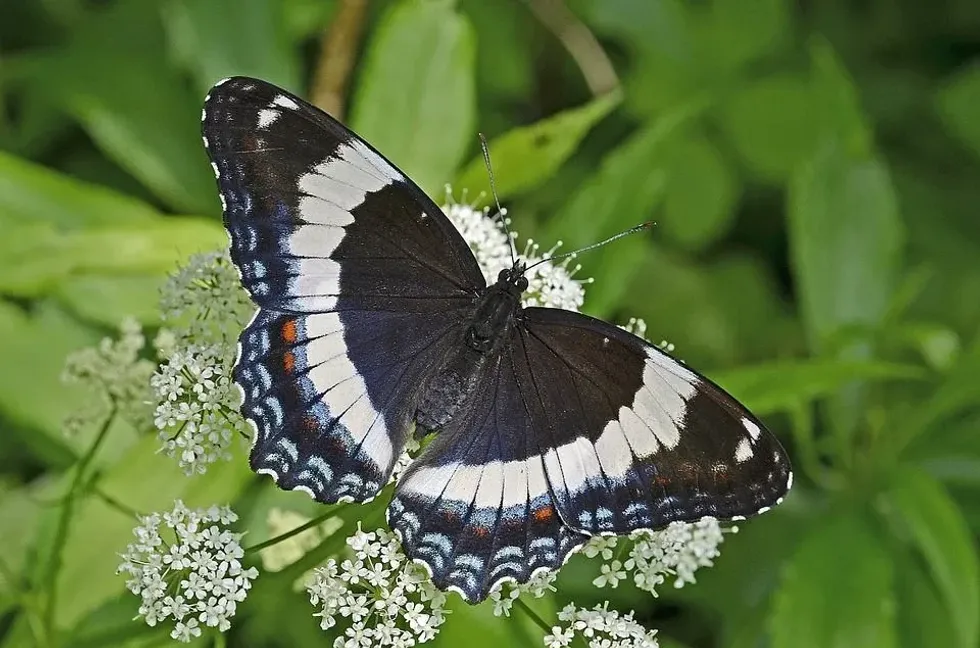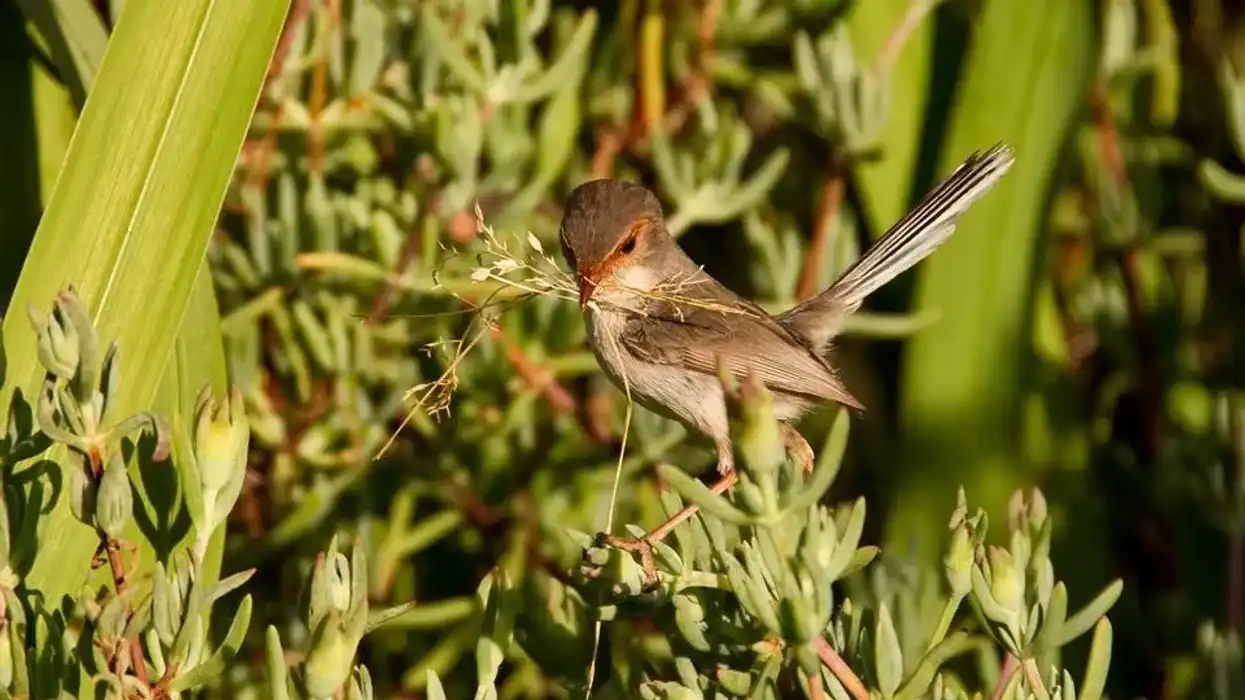Tucked away in the woodlands of North America, the beautiful winged wonder known as the white admiral butterfly flutters around, appearing during the laid-back days of late summer. If you spot one or maybe two black and white butterflies gliding around, giving off a graceful ballet vibe, chances are you've found yourself a white admiral.
With sleek black wings dressed up with snazzy white bands, this species of arthropods are like the tuxedos of the butterfly world.
Now, get ready to explore a forest full of facts and discover more about the elegant white admiral. This is an exciting woodland adventure that will unravel the mysteries of this naturally designed beauty. By the end of this journey, you'll be a white admiral expert, impressing your friends with all the fluttery facts you've gathered!
White Admiral Butterfly Interesting Facts
What type of animal is a white admiral butterfly?
The white admiral shares the same binomial name, Limenitis arthemis, with its fellow subspecies, the red-spotted purple butterfly. It is a very common specie of brush-footed butterflies found in North America. It is not to be confused with the Eurasian white admiral butterfly (Limenitis camilla), its counterpart in Southern England with the same common name.
What class of animals does a white admiral butterfly belong to?
The white admiral butterflies belong to the class Insecta.
How many white admiral butterflies are there in the world?
White admiral butterflies are abundant and very common in the specific areas they are typically found in. There have been many sightings of the white admirals but their exact population is unknown.
Where does a white admiral butterfly live?
White admiral butterflies are found in North America on the edges of forest regions. You can also spot them in your local park. They're spread across various parts of North America, and although their distribution is wide, they're more commonly found in the northern parts of the continent.
They are widespread in the northern areas of the United States from New England to the Great Southern Lake to eastern Canada. White admirals are abundantly found in Massachusetts and the surrounding areas. The most common areas where they are found in abundance include New England and Massachusetts.
What is a white admiral butterfly's habitat?
These butterflies can be found in shady woodlands, roadsides, ride edges, and edges of forests. Their most common habitat is usually mature or neglected woodlands where they can find plenty of nectar. They can be found on birch, maple, oaks, and other trees because that is where they prefer to reproduce and lay eggs.
Who do the white admiral butterflies live with?
This species lives in its habitat along with other members of its species.
How long does a white admiral butterfly live?
The butterflies of this species live approximately 6 to 14 days in their adult stage.
How do they reproduce?
When male butterflies look for female partners, they pick areas where many females visit. They usually start this search in the afternoon, between 11 am and 4 pm.
Most males rest on leaves or branches to show they're guarding their spot. They prefer resting on plants like maple and elm trees or raspberry bushes, usually about 39.4-78.7 in (1-2 m) off the ground.
Interestingly, while you'd expect male butterflies to rest on host trees (since females look for mates near food or host trees), they often don't. This means males sometimes guard spots that aren't popular with females. Female butterflies often mate more than once, leading to competition among the males.
Limenitis arthemis butterflies have two main broods from April to October. Most of the first group grow only halfway before they hibernate for the winter. They wake up in spring. However, some grow fully over the summer and become the second group that appears in early fall.
The females lay greenish-gray eggs on the tips of food plant leaves, usually about 24-36 in (2.3 ft) feet off the ground. In about seven to nine days, these eggs hatch into caterpillars, which then go through their five life stages.
What is their conservation status?
The conservation status of this butterfly is marked as 'not evaluated' by the International Union for Conservation of Nature.
White Admiral Butterfly Fun Facts
What do white admiral butterflies look like?
Limenitis arthemis butterflies have black wings with a prominent white band across the ventral and dorsal surface of their wings. This white band is their standout feature, making them easy to identify.
Their underside is a gingery brown, and females often have red, orange, brown, or blue spots. There are also a few white spots at the wingtips. These butterflies are known for their beauty, with mature females being larger and more colorful than males.
How cute are they?
This species of butterfly is attractive to look at with its white bands and blue, orange, or red spots.
How do they communicate?
White admiral butterflies (Limenitis arthemis) rarely communicate with each other except during copulation. In general, very few butterfly species communicate with sounds. The male white admiral butterfly typically lands behind a female for mating and the female closes its wings if it does not want to mate.
How big is a white admiral butterfly?
This butterfly has a wingspan with a range between 3-3.5 in (7.62-8.89 cm) in length. This is the normal size of an adult butterfly. They are larger than moths, but way smaller than small birds.
How fast can a white admiral butterfly fly?
The flight of the white admiral butterfly is quite distinctive. Their flight is very delicate with short periods of wing beats which are followed by long glides. This butterfly's speed is similar to that of other species; generally, the fastest speed of most butterflies is measured at 5-12 mph (8-19 kph).
How much does a white admiral butterfly weigh?
The weight of adults of this species of butterflies is very negligible as they are very light and delicate. There is no definitive data on how much a white admiral butterfly weighs but they weigh around the same as a regular adult butterfly, which is 500 mg (0.5 g).
What are the male and female names of the species?
The male and female names of the species are the same which is Limenitis arthemis.
What would you call a baby white admiral butterfly?
A baby white admiral butterfly does not have a specific name. At the stage before they mature into adults, all butterflies are known as caterpillars.
What do they eat?
Adults of the white admiral butterfly species usually only feed on liquids. They suck fluids from ripe and rotting fruit, the nectar of flowers, the sap of injured trees, corpses of mammals, and sometimes even animal urine and excrement.
Are they dangerous?
White admiral butterflies are not at all dangerous and are extremely beautiful.
Would they make good pets?
Butterflies are normally not meant to be kept as pets as they are better suited to the wild and forests where they can thrive.
Did you know...
The white admiral was voted as the official insect of Quebec in 1998. Also, the white admiral is the official state butterfly of New York.
White admirals gather on wet soil because the males can detect sodium which is essential for successful reproduction.
One of the prettiest butterfly species in the world is the Morpho which is known for its bright blue wings.
Caterpillars and butterflies are food for various birds. The pupa and the larvae are also food for various insects, bugs, and wasps.
Although it is a common misconception that butterflies can't see their wings, all butterflies including white admiral butterflies can most certainly see them as they have 360-degree vision.
What does a white admiral caterpillar eat?
Caterpillars usually feed on the green leaves of different trees like willow, poplar, birch, and other similar trees.
Do butterflies have brains and hearts?
Butterflies do have a brain and heart, but they're a bit different from that of humans. The center of their nervous system is called the subesophageal ganglion, and it's located in their thorax.
Their long heart-like structure runs along their body's top side and pumps blood from back to front. While their blood serves the same purposes, it isn't red like human blood.
Wrapping up the woodland waltz, isn't the white admiral butterfly just a tiny marvel? On the bright side, their unique appearance makes them a treat to spot during those summer forest adventures.
But remember, these delicate dancers prefer their own space and are a bit rare, so spotting one is like finding a hidden treasure! A pro tip for all budding butterfly enthusiasts: always keep your eyes peeled in shady woodlands or clearings. You never know when the white admiral might decide to put on a show.
So, next time you're out and about, take a moment to appreciate the wonders of nature around you. Who knows, you might just inspire the next generation of butterfly buffs!










